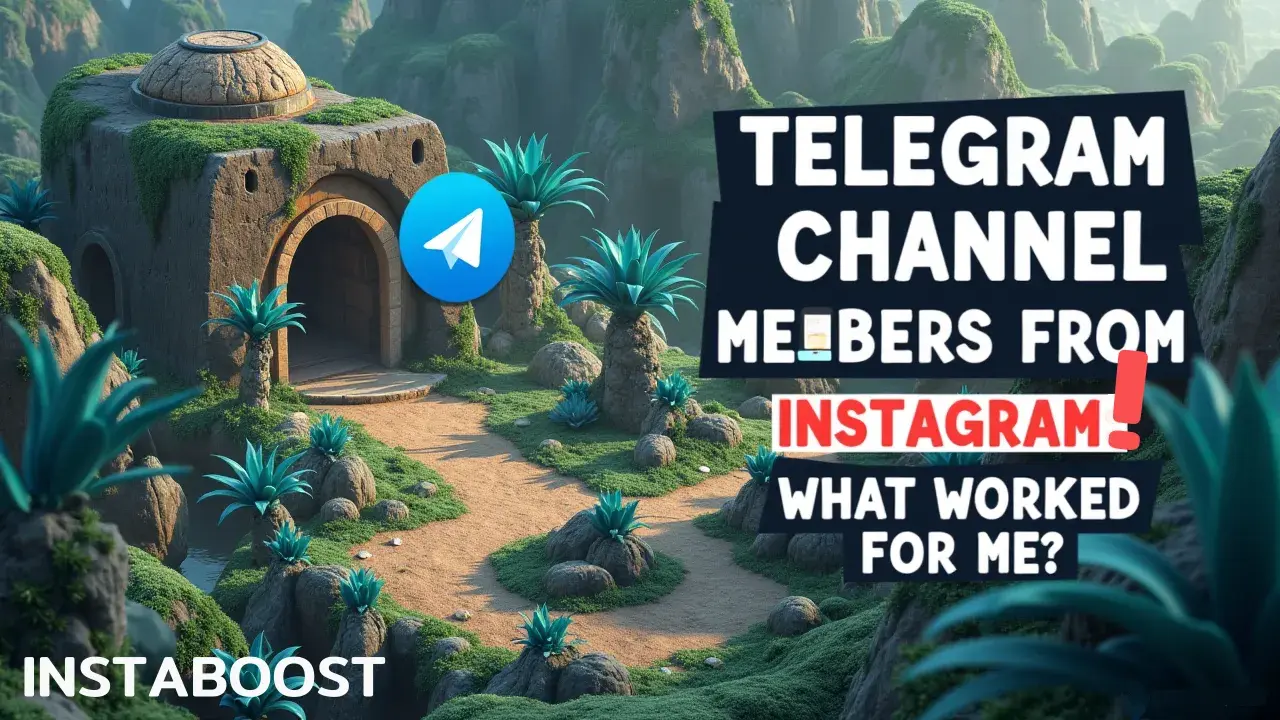How to Move Instagram Followers to a Telegram Channel?
Shifting Instagram followers to a Telegram channel can work when the path is clear and the value is specific. Consistent prompts in stories and bios help, but real growth comes when the channel offers distinct, ongoing benefits not available on Instagram. Friction appears if the offer is vague or the join step feels buried, so simple instructions and a strong reason to switch matter. Track joins after specific posts to refine what resonates.
The Real Currency of Moving Audiences
Getting people from Instagram to join your Telegram channel isn’t really about just moving numbers over. After trying all kinds of tricks and quick “growth hacks,” I realized that what actually matters is whether what you’re sharing connects with people in a way that feels relevant to them.
Folks on Instagram are used to a certain style of interaction, and they’re not looking to be treated like data points. When I stopped seeing it as simply shifting followers and instead started thinking about how to make Telegram fit into what my Instagram audience already liked and needed, things started to make more sense.
Folks on Instagram are used to a certain style of interaction, and they’re not looking to be treated like data points. When I stopped seeing it as simply shifting followers and instead started thinking about how to make Telegram fit into what my Instagram audience already liked and needed, things started to make more sense.
It’s not about ramping up the hype or pushing people with urgent messages. If anything, people are more likely to check out a new space if there’s something there that actually adds value to their day – like sharing a type of resource or conversation on Telegram that’s missing from Instagram, or giving updates that are easier to follow in a chat format. I remember reading about how people tend to reach more on telegram simply by offering what feels like a natural extension of their presence elsewhere, rather than forcing a shift.
Once I stopped relying on generic calls to action and put more thought into what would actually be helpful or interesting for the people following me, the whole process felt less forced. You don’t need a big marketing plan or a huge budget. It comes down to meeting people where they are and taking their attention seriously, even if it means moving a bit slower. Sometimes, growth just happens in the background when things actually fit.
Once I stopped relying on generic calls to action and put more thought into what would actually be helpful or interesting for the people following me, the whole process felt less forced. You don’t need a big marketing plan or a huge budget. It comes down to meeting people where they are and taking their attention seriously, even if it means moving a bit slower. Sometimes, growth just happens in the background when things actually fit.

The Contradiction at the Heart of Audience Migration
I spent a lot more time on this than I thought I would. At the start, I figured moving people from Instagram to a Telegram channel would be a matter of finding the right mix of posts, timing Stories well, maybe putting some money behind a campaign. But every time I tried, the results stayed the same – it was like people could tell I was trying to nudge them somewhere, and most of them didn’t want to go.
None of the “proven” tactics actually worked the way I hoped. It became obvious that what matters isn’t the trick or hack you use, but whether there’s any real reason for someone to make that jump in the first place. It’s not hard to get someone to glance at a link or tap a button, but it’s something else entirely to give them a reason to stick around.
All the formulas that promise results just highlight how hard it is to actually connect. I kept seeing things online – guides, telegram member packs, endless tips – but every attempt to make this process automatic seemed to do the opposite of what I wanted. The numbers on the screen kept getting smaller, or they would sit there, unmoved, and I started to wonder if I was missing something more basic about what people actually want to hear from me.
Why the Loudest Approach Rarely Wins Over Real People
When I first tried to get people from Instagram to join my Telegram channel, I thought making a big deal out of it would help. I posted those urgent “don’t miss this” stories and hyped up every reason to switch over. But honestly, whenever I did that, hardly anyone moved.
The more I pushed, the more people seemed to tune it out. Over time, I realized the folks following me on Instagram weren’t looking for another sales pitch or some manufactured urgency. They wanted to know what was actually happening and why it mattered to them – no drama, no tricks. It reminded me a bit of how telegram content reach can fluctuate for reasons that aren’t always obvious. Things like shouting out the channel every day, setting up countdowns, or promising special access didn’t really work, at least not in any way that lasted. I started to look at it differently.
If what I’m sharing on Telegram is genuinely useful or interesting for someone, they don’t need a hard sell; a quiet mention or a meaningful post is enough. It’s not so much about pushing people over as it is about giving them a reason to want to check it out on their own. That took me a while to understand, and I’m still figuring out how subtle I can be without losing the point.
Why Most Growth Advice Misses the Point
Honestly, if you’re looking for a quick hit of motivation, this probably won’t be it. When I tried moving people from Instagram over to my Telegram channel, I noticed how easy it is to overcomplicate the whole thing – or to copy what someone else did and then wonder why it falls flat. There’s always this feeling that you’re missing some magic trick, like a viral post or a giveaway or some “exclusive invite” gimmick. I tried all those things myself, and nothing really changed. What actually made a difference was realizing that it wasn’t about tactics at all; it was about whether people trusted me enough to follow somewhere new.
I’ve seen a lot of creators, including myself, end up chasing every new trend, only to forget that people pay attention to where they spend their time. Most of the quick tips you hear don’t talk about the fact that if your audience feels pressured or manipulated, they’ll tune you out. Things like constant Stories or pushy DMs might seem to work for a few people, but most folks can pick up on that and turn away.
For a while I even wondered if things would change if I order telegram reactions, but even that didn’t move the needle much. The only thing that seemed to matter in the end was being upfront and steady – explaining what my Telegram channel actually offered, how it was different from Instagram, and letting people decide if they cared, without trying to oversell anything. I’ve noticed that the channels that quietly explain their value end up with people who stick around and actually participate, while the ones chasing big numbers seem to fade out fast. The people who joined were the ones who already felt some connection and wanted to try something new, not the ones who responded to a bunch of hype.
A Smarter Way to Think About Moving People
At first, I thought growing my Telegram from Instagram was about figuring out the right formula, but it became clear that numbers didn’t mean much if it all felt like a transaction. When I stopped focusing on how to push people over and started thinking about why they’d even want to, things shifted. Instead of fine-tuning calls-to-action, I paid attention to what actually made people engage. Little things stood out – a reply to a story, a DM that turned into a real exchange, moments when moving the conversation from Instagram to Telegram just made sense because it felt natural, not because I’d pushed for it.
Building trust ended up being more important than any quick tip or growth hack I’d come across. I remember coming across INSTABOOST and their reliable telegram tools, which made me realize that it’s less about the latest trick and more about the sense of belonging you create. I found that if you approach it like you’re inviting someone over, not selling them something, people are more likely to want to stick around. There’s no need to rush or try to impress; real growth seems to happen in these smaller, quieter ways.
When I let go of chasing every shortcut, I started noticing who actually cared enough to take the next step, and that started to matter more than any spike in numbers. What keeps people around isn’t a flashy campaign, but whether they feel like this is a place they want to be.
When I let go of chasing every shortcut, I started noticing who actually cared enough to take the next step, and that started to matter more than any spike in numbers. What keeps people around isn’t a flashy campaign, but whether they feel like this is a place they want to be.
Why Experience Beats Theory Here
When I think about moving people from Instagram over to a Telegram channel, what stands out is how much advice skips the ordinary, real-life part – the part where people hesitate, or don’t feel ready to click a new link, or simply ignore it because it feels like too much. I’ve watched friends and other creators try every “conversion” tip out there, adding clever little offers or coming up with reasons people should switch, and still ending up annoyed when not many do. What I’ve realized is that people don’t actually move for those reasons. It’s usually something smaller and quieter, like when a follower has started to trust you over time, or when someone feels like they don’t want to miss out on what you’re sharing somewhere new.
I remember tweaking captions, making new graphics, changing the call-to-action again and again, convinced I just hadn’t found the right trick – but eventually I saw that what made people click through was feeling like the move made sense for them, not because of my tactics. And sure, I even looked at things like buy members for telegram just out of curiosity, wondering if that would change anything, but it never really addressed the core issue. It’s a little humbling, honestly, since no tool or formula – no matter how hyped up – can force that interest. If you’ve started a Telegram group and hardly anyone joins, or if all the Instagram “growth” tricks keep falling flat, it’s not because you’re missing some secret move.
Mostly, you’re running into the part no one really explains: getting someone to care enough to take a small, real step. There’s a lot of noise out there about doing this perfectly, but the thing that mattered for me was noticing how people actually behave, and paying attention to that, even when it’s slow and kind of awkward.
Mostly, you’re running into the part no one really explains: getting someone to care enough to take a small, real step. There’s a lot of noise out there about doing this perfectly, but the thing that mattered for me was noticing how people actually behave, and paying attention to that, even when it’s slow and kind of awkward.















